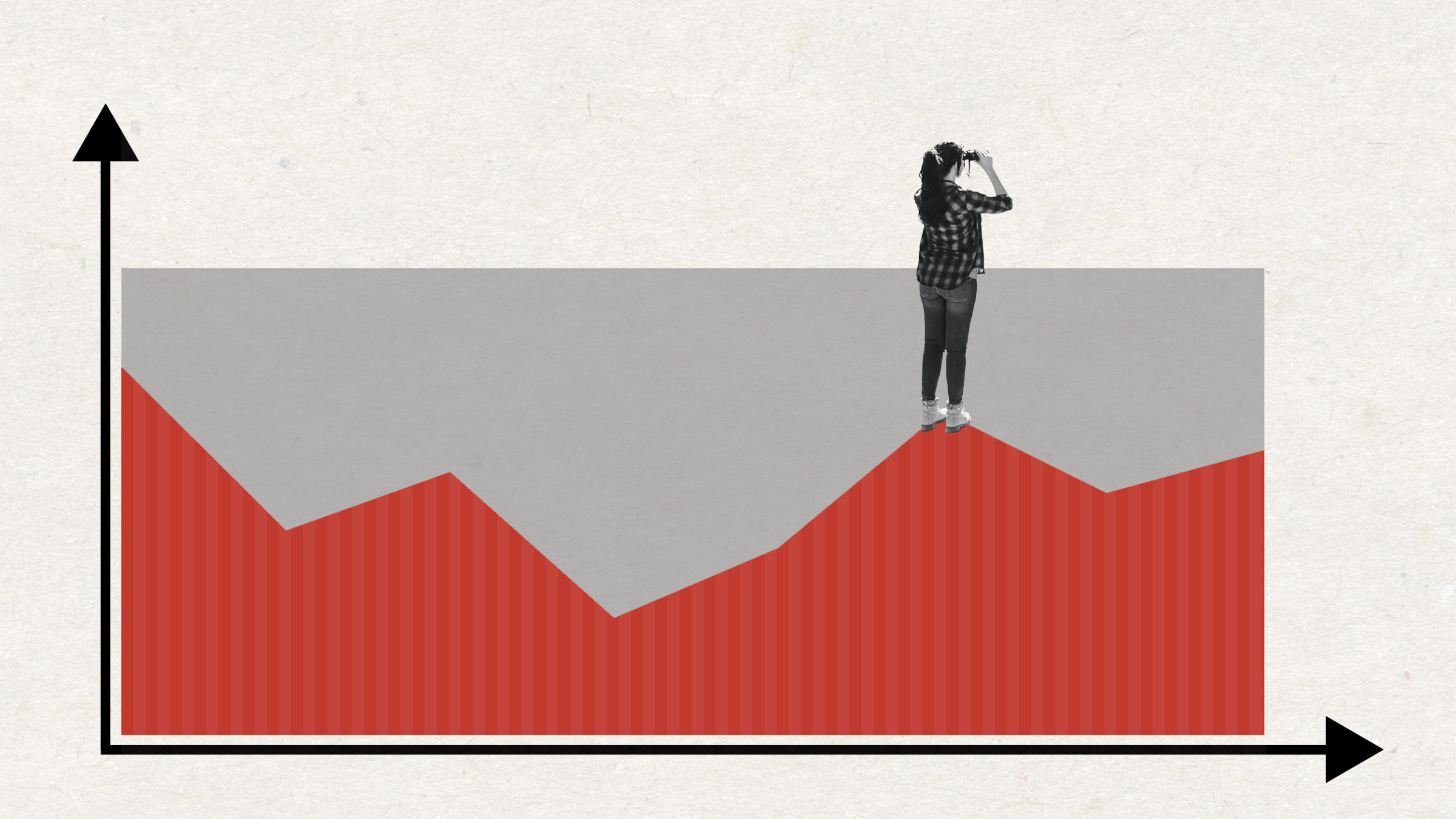Understanding Elevated Economic Uncertainty: Inflation And Unemployment's Role

Table of Contents
The Inflationary Spiral and its Impact on Economic Uncertainty
Defining Inflation
Inflation represents a general increase in the prices of goods and services in an economy over a period of time. It's typically measured using indices like the Consumer Price Index (CPI), which tracks changes in the prices paid by consumers for a basket of goods and services, and the Producer Price Index (PPI), which measures changes in prices received by domestic producers for their output. Different types of inflation exist, including:
- Demand-pull inflation: Occurs when aggregate demand outpaces aggregate supply, leading to increased prices.
- Cost-push inflation: Results from increases in production costs, such as rising wages or raw material prices.
Several factors contribute to inflationary pressures:
- Rising energy prices: Fluctuations in oil and gas prices significantly impact production and transportation costs.
- Supply chain disruptions: Global events and logistical bottlenecks can restrict the availability of goods, driving up prices.
- Increased demand: Strong consumer spending can outstrip supply, leading to upward pressure on prices.
High inflation has several negative consequences:
- Erosion of purchasing power: As prices rise, the value of money decreases, reducing consumers' ability to buy goods and services.
- Decreased consumer confidence: Uncertainty about future prices can lead to reduced consumer spending and investment.
- Potential for stagflation: A combination of high inflation and slow economic growth can create a challenging economic environment.
Inflation's Role in Creating Economic Uncertainty
Unpredictable inflation creates significant uncertainty for businesses and consumers, impacting key economic decisions:
- Uncertainty in pricing strategies for businesses: Businesses struggle to set prices accurately when inflation is volatile, affecting profitability and planning.
- Difficulty in planning long-term investments due to unpredictable inflation: High and volatile inflation makes it challenging to forecast future returns on investments, hindering long-term capital expenditures.
- Reduced consumer spending due to fear of future price increases: Consumers may delay purchases anticipating further price hikes, dampening economic growth.
Unemployment and its Connection to Economic Uncertainty
Defining Unemployment
Unemployment refers to the state of being without work, despite actively seeking employment. The unemployment rate, a key economic indicator, measures the percentage of the labor force that is unemployed. Different types of unemployment include:
- Frictional unemployment: Short-term unemployment that occurs while individuals search for a new job.
- Cyclical unemployment: Unemployment that rises during economic downturns and falls during expansions.
- Structural unemployment: Unemployment that results from a mismatch between the skills of workers and the available jobs.
Several factors contribute to unemployment:
- Economic downturns: Recessions and economic slowdowns often lead to significant job losses.
- Technological advancements: Automation and technological changes can displace workers in certain industries.
- Automation: Increased use of robots and AI can reduce the demand for human labor in various sectors.
High unemployment has severe social and economic consequences:
- Poverty: Joblessness often leads to financial hardship and poverty for individuals and families.
- Social unrest: High unemployment can contribute to social instability and political unrest.
- Decreased government revenue: Reduced employment lowers tax revenue, impacting government budgets and social programs.
Unemployment as a Driver of Economic Uncertainty
High unemployment fuels economic uncertainty by creating a ripple effect:
- Reduced consumer demand leading to business closures and further job losses: Lower consumer spending forces businesses to cut costs, potentially leading to further layoffs.
- Increased government spending on social welfare programs: Governments often increase spending on unemployment benefits and other social programs, increasing budget deficits.
- Political instability due to widespread dissatisfaction: High unemployment can fuel social unrest and political instability, negatively impacting economic stability.
The Phillips Curve and the Inflation-Unemployment Trade-off
Understanding the Phillips Curve
The Phillips Curve illustrates the historical inverse relationship between inflation and unemployment. Traditionally, it suggests that lower unemployment is associated with higher inflation, and vice-versa.
However, the Phillips Curve has limitations:
- Stagflation: Periods of high inflation and high unemployment simultaneously challenge the traditional inverse relationship.
- Supply shocks: Unexpected events like oil price spikes can disrupt the relationship, leading to both higher inflation and higher unemployment.
- The role of expectations in shaping the inflation-unemployment relationship: If people expect high inflation, they may demand higher wages, leading to a wage-price spiral.
Navigating the Trade-off in Times of Economic Uncertainty
Policymakers face a difficult challenge in managing the inflation-unemployment trade-off during periods of heightened economic uncertainty:
- Monetary policy tools (interest rate adjustments) and their impact on inflation and unemployment: Raising interest rates can curb inflation but may also increase unemployment.
- Fiscal policy tools (government spending, taxation) and their impact on inflation and unemployment: Government spending can stimulate economic growth and reduce unemployment, but it can also fuel inflation if not managed carefully.
Conclusion
Elevated economic uncertainty, largely driven by the interplay between inflation and unemployment, poses significant challenges to global economies. Understanding the dynamics of inflation and unemployment, including their relationship as depicted by the Phillips Curve, is crucial for policymakers and individuals alike. By carefully analyzing economic indicators and employing appropriate monetary and fiscal policies, we can strive to mitigate the negative effects of elevated economic uncertainty. Continued monitoring of inflation rates and unemployment figures is critical for informed decision-making and navigating this complex economic landscape. Stay informed on understanding elevated economic uncertainty to effectively manage your financial future and make well-informed investment choices.

Featured Posts
-
 Erfolgreich Wie Steffi Graf Und Andre Agassi So Meistern Sie Pickleball
May 30, 2025
Erfolgreich Wie Steffi Graf Und Andre Agassi So Meistern Sie Pickleball
May 30, 2025 -
 Taylor Swift Ticket Sales Ticketmasters New Line System Explained
May 30, 2025
Taylor Swift Ticket Sales Ticketmasters New Line System Explained
May 30, 2025 -
 Apples Reported Os Rename What We Know
May 30, 2025
Apples Reported Os Rename What We Know
May 30, 2025 -
 Live Now Pay Later Financing Options Explained
May 30, 2025
Live Now Pay Later Financing Options Explained
May 30, 2025 -
 Planlegg Badeturen Sjekk Vaer Og Temperaturer For Du Drar
May 30, 2025
Planlegg Badeturen Sjekk Vaer Og Temperaturer For Du Drar
May 30, 2025
